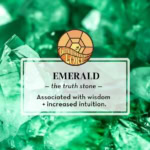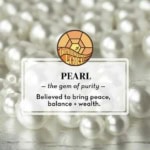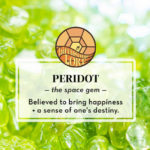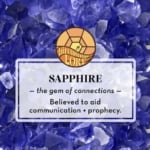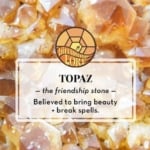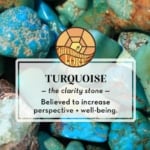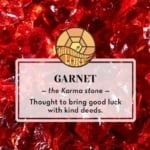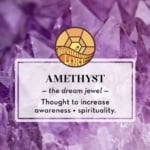February Birthstone – Amethyst, the Stone of Peace
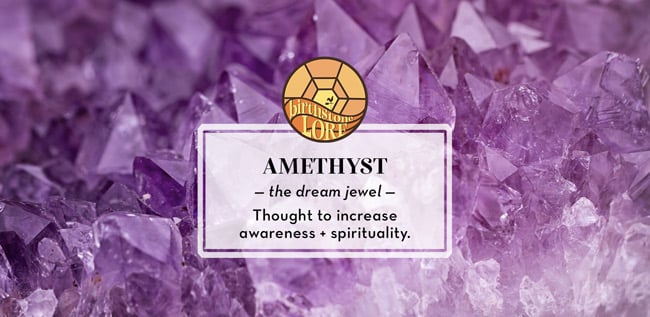
February birthstone, amethyst, is associated with Bacchus, the god of wine, yet its name is derived from the Greek word amethystos, meaning “not intoxicated.” This beautiful violet gem has a rich history that spans many ages and cultures. Discover interesting facts, folklore, and famous amethysts from around the world in the following article.
Folklore
Amethyst was used in ancient Egyptian amulets designed by priests for prayer and protection. Pharaoh Djer of Egypt’s 1st dynasty, King Tutankhamen (King Tut) and Queen Mereet had amethyst adornments in their tombs ranging from bracelets, anklets, and scarabs. Some ancient Egyptian specimens date back to 3000 BC.
Ancient Greeks associated amethyst with Dionysus, the god of wine and pleasure. They used this stone to be clever and exercise caution in battle or business dealings. Amethyst was believed to bring out the highest aspirations of humankind.
Early Christians often associated amethyst with Christ. This is possibly as a result of the passage in the Bible where Jesus is dressed in purple and mocked for claiming to be King of the Jews. Some believe that purple signifies the wounds Jesus suffered and thought amethyst could aid in healing wounds.
Amethyst was also said to be used at the foundation of New Jerusalem and was thought to be used used on the Breastplate of Aaron. The Hebrew word for amethyst is ahlamah, meaning “dream stone.”
The patron saint of romantic love, Saint Valentine, is believed to have worn an amethyst ring with an image of cupid carved into it. To this day, most bishops wear a ring with an amethyst set in it to symbolize the union of the bishop and the diocese.
Amethyst was sought after over many centuries. During the Italian Renaissance, Leonard da Vinci was fascinated by this gem. He believed that amethyst could quicken intelligence and get rid of evil thoughts.
Later, during the French Renaissance, poet Remy Belleau imagined two different versions of amethyst myths (though neither of these were believed during Roman times). In one variation of the tale, Bacchus (the Roman name for Dionysus) was pursuing Amethyste, a young woman. She was not interested in his advances, so she asked the gods to help her remain pure.
Diana, the goddess of hunters and the Moon, answered her prayer by turning her into a clear quartz crystal. When Bacchus saw Amethyste’s dedication to chastity, he poured wine over the crystal in tribute. This turned the quartz purple.
In another variation, Bacchus was enraged over an insult and decided to exact revenge on the next person he met. A maiden named Amethytos (a slightly different spelling) was on her way to Diana’s Shrine when she crossed Bacchus’ path.
He unleashed two tigers to attack her. Frightened for her life, Amethytos asked Diana for protection. Diana turned her into a clear quartz. When Bacchus realized what he had done, he cried violet tears and turned the crystal violet.
Metaphysical Properties
- Many cultures throughout time believed amethyst to be a spiritual stone that brings tranquility and soothes dreams by aligning one with the divine. They are thought to reduce insomnia, arthritis, circulatory problems, and chronic pain.
- It was believed that this stone prevented drunkenness. More than that, amethyst was thought to keep the wearer quick-witted and clear of mind in both business and battle.
- Helps the mind flow more freely between the mental and metaphysical dimensions.
- Amethyst is used by Chinese practitioners of Feng Shui. They believe amethyst has the power to transform negative (lower) vibrations into positive (higher) ones. Buddhists believe this stone was sacred to Buddha and use them in prayer beads.
- Rubbing a wet amethyst on a pimple is said to cure the blemish!
- Thought to promote courage, inner strength, peace, and balance.
- Amethysts are used to celebrate both the 6th and 17th years of marriage.
- During the Renaissance, Europeans thought amethysts calmed impassioned lovers.
Facts
Is amethyst a form of quartz?
Yes, amethyst is a type of quartz that comes in shades of purple. These shades can range from a very light lavender to a deep, dark royal purple color. Some stones contain hints of gray, pink or red, and others may have layers or variable colors. While quartz is the second most abundant mineral found on earth, amethysts aren’t as common.
What makes it purple?
The color comes from radiation, trace elements, and iron impurities.
Where can this February birthstone be found?
This stone is found all over the world, often in geodes or in cavities formed in granitic rocks. Prior to the 19th century, Russia was the world’s biggest source of amethysts—but then large deposits were found in Brazil.
Today, South America, Africa, and particularly Brazil, are the most important suppliers of these stones.
Famous Ones
- It has been said that Cleopatra’s signet ring was an amethyst engraved with the Persian deity, Mithras.
- There are historical accounts of Saint Valentine possessing an amethyst ring carved to look like Cupid. This stone is also associated with royalty in large part because of the color—which British royals wore on their regalia during the Middle Ages.
- In the 1700s, Catherine the Great, Empress of Russia, had something of a love affair with the amethyst. She absolutely loved the gem and was known for decking herself in amethyst necklaces, earrings, and various ornaments.
- In the last century, amethysts enjoyed the limelight yet again when famed jewelry connoisseur Wallis, Duchess of Windsor, wore a gorgeous Cartier-designed bib-style amethyst and turquoise necklace to a Versailles gala in 1953.
- The Empress of Uruguay is the largest amethyst geode known. It was discovered in 2007 and took three months to excavate from the basalt stone that surrounded it. It stands over 10 feet tall and weighs over two tons!
- Queen Mary of Great Britain had a splendid amethyst set: tiara, earrings, ring, and necklace parure. It is believed the parure was created in the 1900’s and was most likely a wedding gift. She is seen wearing them in a portrait taken in the 1890s. All the items were put up for auction and their current location is unknown. Anna Wintour,editor-in-chief at Vogue, wore the necklace to a party at a museum in 2007.
- At the Anahi Mine in Bolivia, three amethyst clusters were unearthed. It is extremely rare to find such massive amethyst clusters. The three clusters weigh over two tons with some individual points being between 3-8 inches in diameter.
Alternative February Birthstone – Fluorite
A colorful alternative February birthstone is fluorite. Found in all the colors of the rainbow (even clear, white, and black), fluorite is thought to bring balance.
Like amethyst, it is often used in Feng Shui for its perceived ability to transmute negative energy into positive energy.
Read more about other birthstones and their meanings.
Join The Discussion
What did you learn from this article today?
Were you born in February?
Do you have a piece of amethyst?
Let us know in the comments below!
Related Articles
Birthstones By Month – Facts And Folklore
Read more about other birthstones and their meanings.




